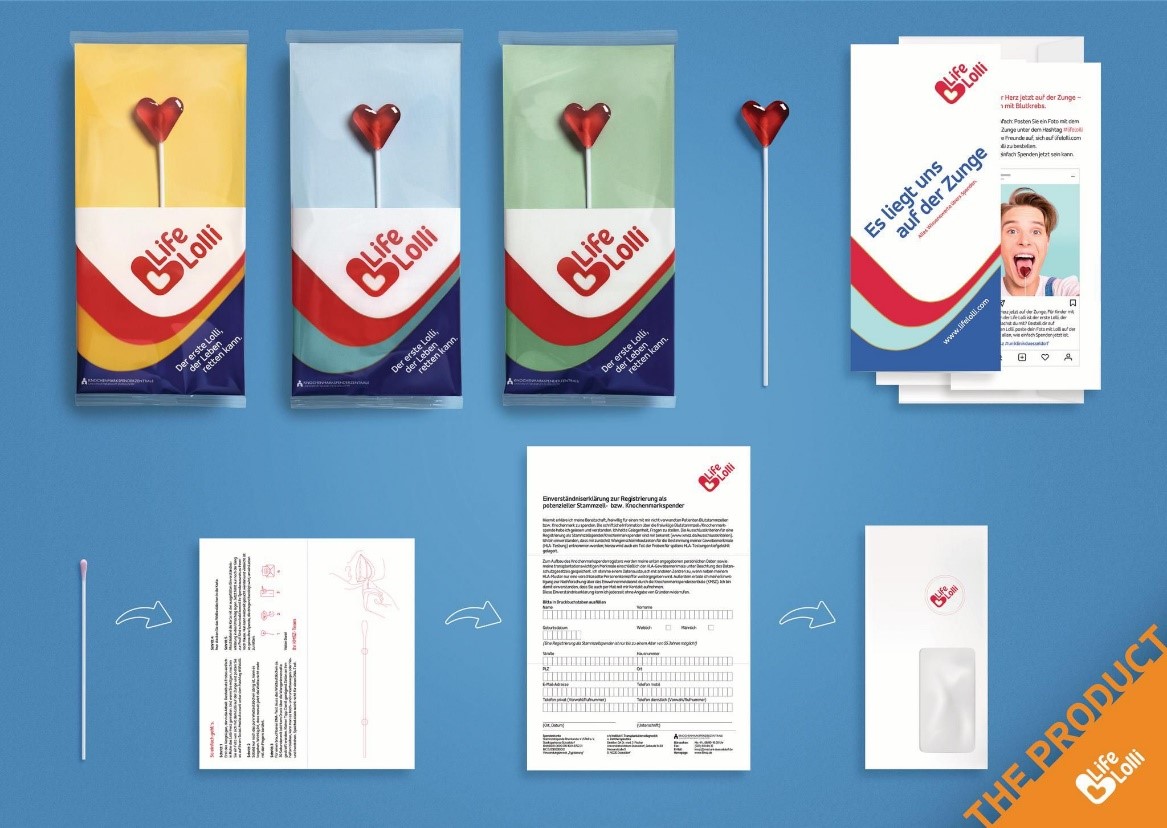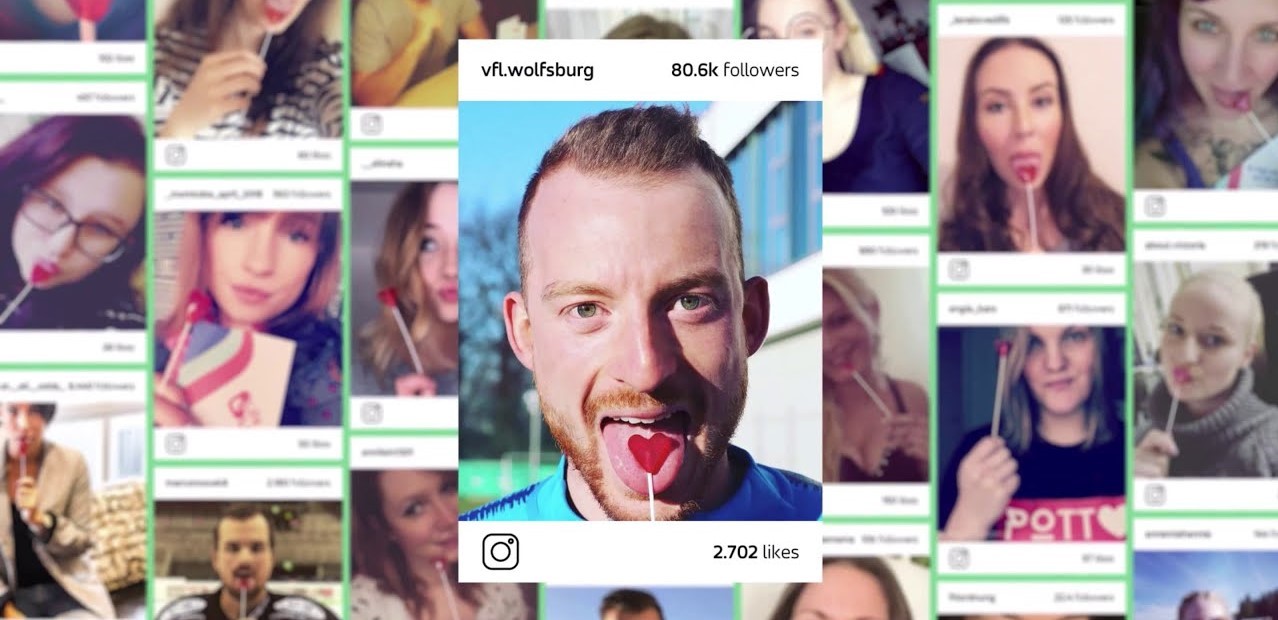BBDO Germany’s Andy Wyeth offers behind-the-scenes insights and lessons from KMSZ’s Life Lolli campaign, which won Bronze at the 2021 Creative Effectiveness Lions.
Life Lolli began as the brain child of one of our talented Art Directors. She lost a friend to blood cancer and knew first-hand the difficulty in finding a compatible DNA donor. Those who are lucky enough to find compatible stem cells however, have a very good chance for survival. We knew that the best and most compatible DNA comes from people aged 18-30. These donors have as much as five times the likelihood of positive matches compared to other age segments. The challenge, however, is that while their willingness to donate is 48% above other age groups’ average, only 18% are registered as donors. We needed to find a breakthrough to finally activate the help of this audience.
The typical tool for a DNA test is a simple stick or swab. That’s where we saw an opportunity to disrupt the category to resonate with young people and make them want to take action. By making the DNA test more playful, fun, and even delicious, we could attract an audience that had never even considered stem-cell donation before. To do that we created the first lolly that can save lives, the Life Lolli. A heart-shaped lollipop that provides a tasty way to collect your DNA, and an irresistible opportunity for the selfie-generation to share their good deed with the world.

The idea was launched on World Children’s Cancer Day thanks to the charitable help of over 100 key German influencers including gamers, musicians, comedians, fashion icons, celebrities and sports stars. Influencers’ posts drove traffic to KMSZ’s website, where people could order a Life Lolli for free. Then, they could donate their DNA to the national register and invite their followers to get involved. This launched the #lifelolli movement: a social media mechanism that generated continual reach without any media spend. The campaign for the KMSZ was more than a request for donations, it was an engagement that lived within pop culture.
We learnt so much throughout this campaign, but a couple of bigger themes are worth sharing.
Idea-first
I think the ultimate success factor of Life Lolli was that we looked beyond communication to solve the problem. We could have found a modern way to speak with our audience and stopped there, but that wouldn't have addressed the real reason why this age group was not engaging with the cause. It wasn't just the communication that was dusty, the entire process of adding your DNA to the national register was cumbersome and unsexy. Once we'd solved that, telling people about it was the easy part.
Social at heart
Another key learning was, to quote Facebook, to make your idea social by design. This means the idea at its very core is social. It's not just an ad on social, but actually utilises social behaviour. Do this and it's like throwing petrol on the fire. We knew our audience loves to share their lives and there's nothing better to share than a good deed. So, the social mechanic became an integral part of the concept. Everyone who receives a Life Lolli is encouraged to share a photo of the heart-shaped lollipop on their tongue on Instagram. The beauty of this is that every order creates more orders organically without the need for any media spend. Even to this day, this system feeds itself and closes the loop.

The power of influence
The fact that our ultimate goal was to save lives was a huge factor in getting the charitable support of the German influencer community. But what surprised us all was the power these people have in activating their audiences. It was incredible seeing the orders come in literally in the thousands after an influencer endorsed the campaign. Don't play down this channel when you are planning your campaigns. When done right, it really works.
An audience coming together
This campaign was pre-COVID, but also proved the power of our collective good. Don't underestimate the goodness of mankind. In our case, we really asked a lot from our audience. We asked them to go through the order process, to share a picture of themselves, to share their genetic information to a national registry and, if that wasn't already enough, we asked them to donate their stem cells if their DNA matched a sick patient. Incredibly, more than 50,000 people have done so and the numbers continue to rise.
Life-saving creativity
The beauty of creativity is that it manifests itself in different ways and in our case it was a new product that disrupted an entire industry and helped us create a campaign with incredible numbers. The most important of those being the 18 lives we've saved so far. Life Lolli has taken on a life of its own and we hope to see it picked up in other markets and continue to positively impact the lives of patients with blood cancer.
An abridged version of this article appears in WARC's report, Insights from the 2021 Creative Effectiveness Lions winners.

